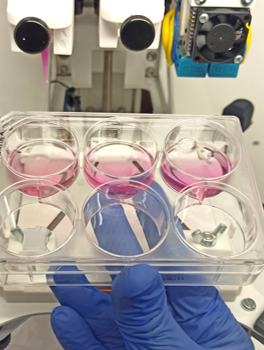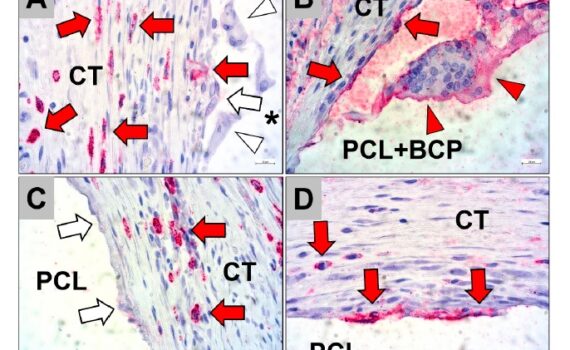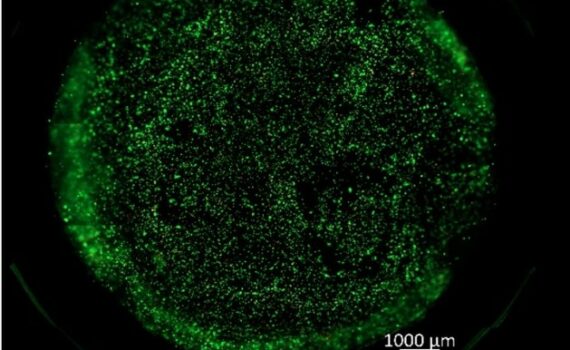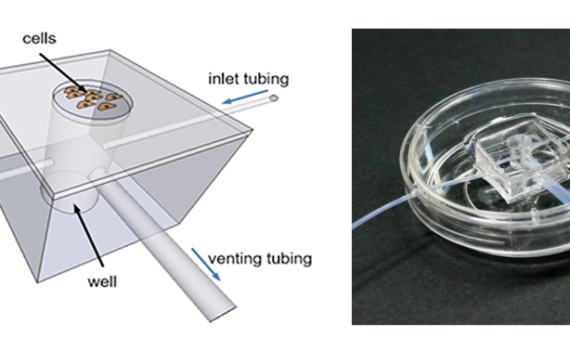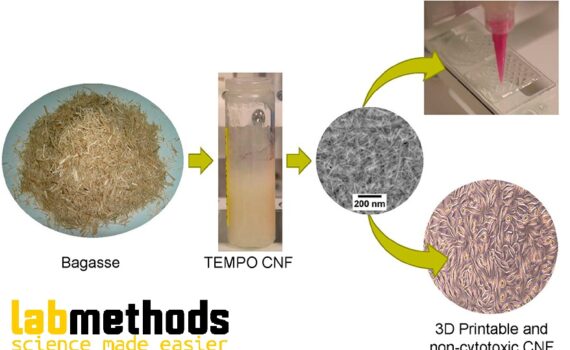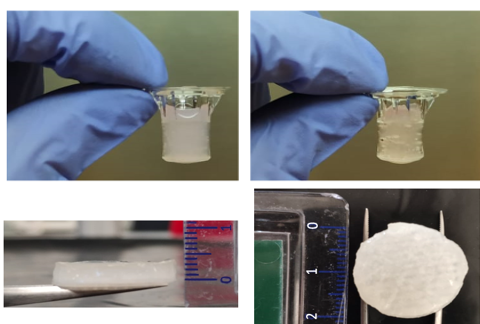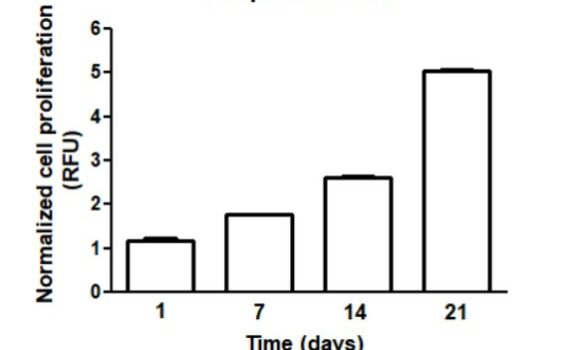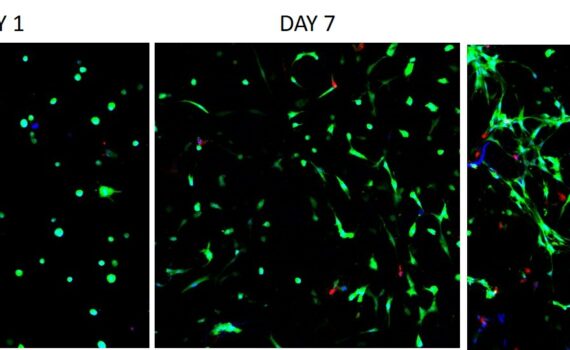+70 Introduction Choosing appropriate biomaterials for fabricating a bioink is a fundamental step in3D bioprinting. While a wide variety of biomaterials can be used, hydrogels have been pointed as attractive materials for bioink preparation, since they can provide a highly hydrated and permeable 3D polymeric structure with tunable mechanical and […]
Biomaterials
+30 In this method we describe the parameters to FDM bioprint scaffolds for Bone regeneration Composed by of 80% PCL that had a MW 80,000 (Polysciences Europe, Hirschberg an der Bergstraße, Germany) and 20% of the synthetic biphasic calcium phosphate bone substitute material (BCP) (synprint, ScientiFY GmbH, Berlin, Germany) with […]
+20 Introduction Fibrin is a degradable, resorbable biopolymer that naturally occurs in the wound healing process at the vascular level. It is formed from fibrinogen, a glycoprotein synthesised by the liver and found in blood plasma. When tissue damage occurs and results in bleeding, fibrinogen is converted into fibrin at […]
+30 3cc X- gel-Ma INX ready-to-use syringes were loaded and the bioprinted using the V1 REGEMAT3D bioprinter, equipped with the REGEMAT3D Designer Version 1.5, REGEMAT3D, Granada, Spain. Grids having a 10mmx10mm in width and length and 1mmx1mm as pore size were printed directly on the glass for testing purposes. The […]
+30 Introduction Organ-on-a-chips are defined as physiological organ biomimetic systems built on microfluidic devices. By combining cell biology, engineering and biomaterial technology, the microenvironment of the chip is able to simulate tissue interfaces and mechanical stimulation of the native organ. They are in the list of top 10 emerging technologies […]
+30 CNF Nanocellulose gels (2 wt %) were used as inks for 3D printing. The 3D printing was performed with a Regemat3D bioprinter (version 1.0), equipped with the Regemat3D Designer (version 1.8, Regemat3D, Granada, Spain). Grids having a diameter of 20 mm and a height of 2 mm were printed […]
+70 Introduction The skin is an important protection of the body against the external environment. Its structure formed by the epidermis, dermis and hypodermis, constitutes a fundamental role for its function of physical barrier, thermoregulation, homeostasis and immunity. The importance of these functions is especially evident in the physiological disorders […]
+20 Human articular chondrocytes were isolated as previously described (Lopez-Ruiz et al., 2013) Chondrocytes were grown in Dulbecco’s modified eagle’s medium (DMEM) – high glucose (Sigma) supplemented with 10% fetal bovine serum (Gibco), 50 microg/microL of l-ascorbic acid 2-phosphate (Sigma), 1% penicillin-streptomycin (Sigma), and 1% ITS (Gibco) in a 25-cm2 […]
+10 Introduction 3D in vitro models offer a better representation of in vivo conditions, which is translated into differences in cellular morphology, metabolism and functions when compared with cultures in monolayer. To measure such differences, a plethora of indicators can be used; with the alamarBlue assay, levels of oxidation during […]
+30 Introduction To date, most cell-based assays use traditional 2D monolayer cells cultured on flat and rigid substrates. However, these models are unable to reproduce the architecture, mechanical and functional properties inherent to native tissues, thus hampering the translation of research results into clinics. For these reasons, 3D cell culture […]

